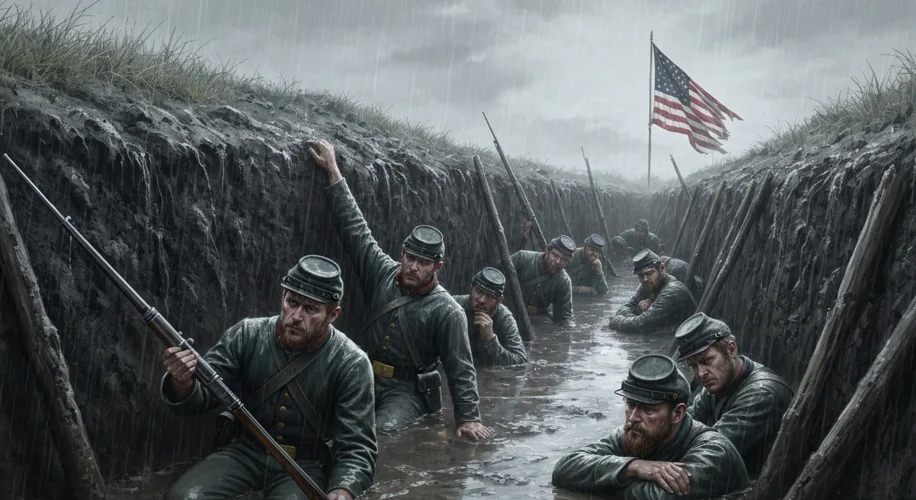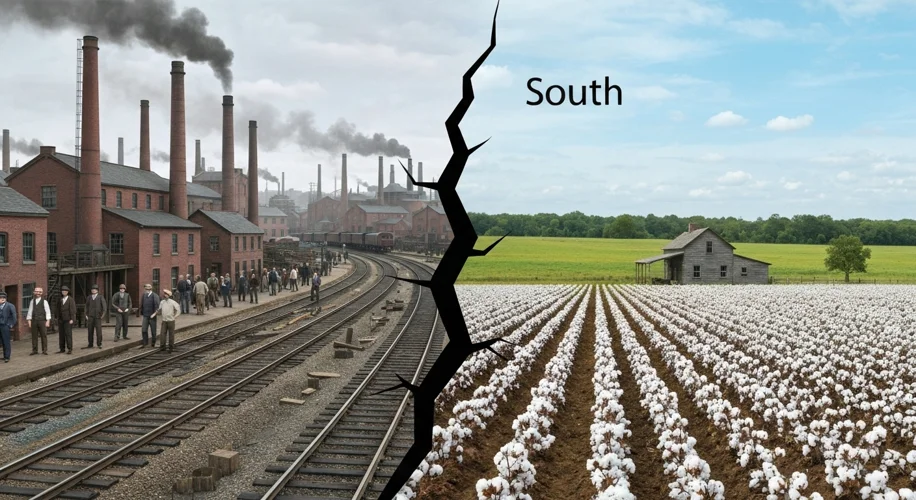The air in 1861 crackled not with the promise of spring, but with the ominous thunder of division. Across the United States, a nation founded on ideals of liberty and equality was poised to tear itself asunder. This was not a sudden storm, but the culmination of decades of simmering tension, a brewing tempest fueled by the deeply entrenched institution of slavery and starkly diverging visions of America’s future.
For generations, the Southern states had woven their economic and social fabric around the forced labor of enslaved Africans and their descendants. Cotton, tobacco, and sugar cane, cultivated by the relentless toil of human beings stripped of their dignity, were the lifeblood of the South’s agrarian economy. This system, brutal and dehumanizing, was defended with fervent conviction, cloaked in arguments of states’ rights and racial superiority. In contrast, the North, increasingly industrialized and populated by immigrants, began to view slavery with growing moral repugnance. Abolitionist voices, once whispers, grew into a chorus demanding an end to the barbaric practice.

The election of Abraham Lincoln in 1860 served as the lightning strike that shattered the fragile peace. Lincoln, a Republican whose platform opposed the expansion of slavery into new territories, was seen by the South as an existential threat. Within months, eleven Southern states, believing their way of life was irrevocably imperiled, seceded from the Union, forming the Confederate States of America. Jefferson Davis, a former U.S. Senator, became their president, leading a desperate bid to forge a new nation where slavery would be its cornerstone.
The conflict that ensued was unlike anything the young nation had ever witnessed. It was a war of brothers against brothers, a brutal test of whether a nation conceived in liberty could long endure. Battles raged across verdant fields and muddy trenches, from the bloody plains of Gettysburg to the relentless sieges of Vicksburg. The bravery and sacrifice of soldiers, North and South, were immense, yet the cost was staggering.
Consider the plight of a young Union soldier, perhaps named Thomas, from a farm in Ohio. He marched south, fueled by patriotic fervor and a belief in preserving the Union. He endured the gnawing hunger, the biting cold, the constant fear, and the searing agony of witnessing his comrades fall. He saw firsthand the devastating efficiency of new weaponry like the rifled musket and the ironclad warship. On the other side, a Confederate soldier, perhaps named William, from a Georgia plantation, fought to defend his home and what he believed was his right to a particular way of life, even as that life was built on the suffering of others. He, too, faced unimaginable hardship, his cause increasingly desperate as the Union’s superior resources began to tell.

The war was not just fought on battlefields. It was a struggle for the hearts and minds of a nation. Lincoln’s Emancipation Proclamation, issued in 1863, transformed the conflict into a moral crusade for freedom, irrevocably changing the war’s objectives. It weakened the Confederacy by encouraging enslaved people to flee to Union lines and bolstered Northern morale by aligning the war effort with the abolitionist cause.
Generals like Ulysses S. Grant and Robert E. Lee became legendary figures, their strategies and tactical brilliance shaping the course of the war. Grant, known for his relentless pursuit and willingness to sustain heavy casualties, eventually wore down Lee’s Army of Northern Virginia. Lee, a masterful tactician, fought valiantly but ultimately could not overcome the North’s overwhelming advantages in manpower and industrial capacity.

Four long years after the first shots were fired, the war drew to a bloody close. On April 9, 1865, Robert E. Lee surrendered to Ulysses S. Grant at Appomattox Court House, Virginia. The Union was preserved, but the cost was immense: over 620,000 lives lost, more than in almost all other American wars combined. The South lay in ruins, its economy shattered, and its social order irrevocably altered.
The consequences of the Civil War were profound and far-reaching. Slavery was abolished, a monumental step towards realizing America’s founding ideals. The nation, though scarred, was reunited, setting the stage for its rise as a global power. However, the end of the war did not signify an end to the struggle for racial equality. The subsequent Reconstruction era was a turbulent period, marked by both progress and fierce resistance, as the nation grappled with the complex legacy of slavery and the challenges of integrating millions of newly freed people into society.
The American Civil War remains a defining chapter in the nation’s history, a stark reminder of the terrible price of division and the enduring fight for justice. It was a crucible that forged a new America, but one still wrestling with the ghosts of its past.

